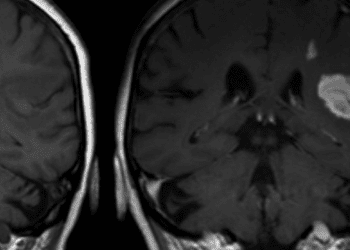Risk factors associated with cognitive impairment development in older adults
1. This longitudinal prospective cohort study found that older adults with trajectories involving impairments to instrumental activities of daily living, higher comorbidity, and increasing depressive symptoms were particularly at risk for developing cognitive impairment.
Evidence Rating Level: 2 (Good)
The global population is rapidly aging, and with this comes an increased incidence of morbidity and disease burden. In particular, cognitive impairment – marked by difficulties with memory, learning, concentration, and decision-making – will continue to burden the aging population. Thus, a preventative approach aimed towards identifying risk factors for dementia and cognitive impairment are of great importance. Previous literature has pointed to factors including sleep disorders, depression, functional limitations, and multimorbidity as correlates for cognitive impairment, but their trajectories through the lifespan are often neglected in the reporting of results. The current study made use of 8 years worth of measurement data from the Health and Retirement Study (HRS) to identify correlations between long-term health status and cognitive impairment. After implementing exclusion criteria, over 4319 adults older than 60 (mean [SD] age, 75.5 (5.55); 61.4% female) had demographic and health data analyzed, including several measures for sleep disturbance, functional status, and depressive symptoms over the course of 8 years. Those who reported sleep disturbances, increasing limitations on activities of daily living (ADLs/IADLs), and increasing scores on depression inventories over the years were more likely to be older, female, less educated, overweight, and sedentary. On an assessment of those participants that developed cognitive impairment, high multimorbidity status (HR = 1.89; 95% CI = 1.49–2.39), worsening depressive symptoms (HR = 1.80; 95% CI = 1.53–2.12), limitations in ADLs (HR = 1.88; 95% CI = 1.54–2.31), and IADLs (HR = 2.98; 95% CI = 2.34–3.78) presented heightened risk for cognitive impairment. Interestingly, the effects of increasing difficulty with IADLs (e.g., using the telephone, managing money, taking medications, shopping for groceries, and preparing hot meals) were more strongly correlated with cognitive impairment for older adults living in urban areas (HR = 2.30; 95% CI = 1.65–3.21; P for interaction = 0.049) compared to rural areas. The interaction of IADL impairment and cognitive impairment was also stronger in those with a history of smoking (HR = 2.77; 95% CI = 1.91–4.02; P for interaction = 0.033). For every point increase in the total score of risk trajectories, risk for cognitive impairment increased by 49%. Overall, the results of this study indicate that there exists a co-occurrence between physical, psychological, and neurocognitive disorders. A randomized trial should be implemented in the future to explore the effects of early intervention for these conditions, particularly for patients in the identified at-risk groups.
Click to read the study in BMC Medicine
Image: PD
©2024 2 Minute Medicine, Inc. All rights reserved. No works may be reproduced without expressed written consent from 2 Minute Medicine, Inc. Inquire about licensing here. No article should be construed as medical advice and is not intended as such by the authors or by 2 Minute Medicine, Inc







